By 2030, the Royal Navy plan to have moved carrier based ‘Airborne Early Warning’ capability from Merlin helicopters to ‘Vixen’ fixed wing drones.
According to a presentation on the ‘Future Maritime Aviation Force’, the Royal Navy will move airborne early warning capabilities to fixed-wing carrier launched drones called ‘Vixen’.
They say that this will “rejuvenate” the Merlin fleet. Currently, airborne early warning capabilities are delivered by Merlin with ‘CROWSNEST’ pods, you can read more about that at the link below.
The presentation states that “by 2030”, the Royal Navy will have:
“Added mass to the Carrier Wing with additional LIGHTNING and medium FWUAS (VIXEN)” and “will have rejuvenated the Merlin fleet, to synchronise with replacement capabilities, transferring PWAS/AEW/Data Node to VIXEN and ASW FIND to medium RWUAS (PROTEUS)”.
The text accompanying the ‘By 2030’ slide is as follows:
“We will have added mass to the Carrier Wing with additional LIGHTNING and medium FWUAS (VIXEN). We will have rejuvenated the Merlin fleet, to synchronise with replacement capabilities, transferring PWAS/AEW/Data Node to VIXEN and ASW FIND to medium RWUAS (PROTEUS). Wildcat will be augmented with additional ASUW/Littoral FIND capability, also by PROTEUS.
Maritime Protector will provide complementary support where teamed with POSEIDON in the North Atlantic. Small UAS capabilities will be spirally developed to encompass EW,UW and target training support.
Successful payload and weapon integration will also be key to the success of FMAF.
In 2030, medium organic UAS will deliver most FIND in the Littoral and Maritime, teamed with crewed air for FIX/STRIKE, and complemented by Maritime Protector. ASW Merlin will regain mass with the transfer of AEW capability to an alternate platform. Together with enhanced FW in the Carrier Air Wing, Maritime Aviation will be reconstituted to match evolving peer threats.”
Discussing ‘Project Vixen’, respected defence journalist Harry Lye wrote:
“Under Project Vixen, the Royal Navy is exploring how fixed-wing UAS could be used for missions including surveillance, air-to-air refuelling, electronic warfare and strike.”
You can read more about Vixen from Harry here.
How will the drones be launched?
Earlier, we reported that the Ministry of Defence is currently seeking information on the potential for industry provide assisted launch and arrested recover systems for a range of air vehicles, which would be suitable to fit to a vessel within 3 – 5 years.
The Ministry of Defence say that this request for information is to support the development of the Royal Navy’s Future Maritime Aviation Force (a presentation on which is where the slide above came from) with potential for use with both crewed and un-crewed air vehicles.
The Ministry of Defence add that it is looking to assess the availability of electromagnetic catapult, and arrestor wire systems for the launch and recovery of air vehicles.
While the Request for Information looks to assess the “availability of electromagnetic catapult and arrestor wire systems to launch aircraft” from a ship, words associated with the previous effort to explore converting the vessels to ‘CATOBAR’ in order to launch carrier variant F-35Cs, it shouldn’t be taken as indication that the Royal Navy are abandoning the short take off and vertical landing F-35Bs and returning to catapult launched fighters. On the contrary, they’re looking to augment the F-35Bs.
In fact, the upper and lower weight limits of the catapult and recovery system outlined aren’t enough to launch or recover any variant of the F-35 in normal conditions.
The launch and recovery options mentioned would be utilised for larger uncrewed aircraft as the armed forces begin to rely on them more and more in place of crewed platforms.
Anyway, on to the Request for Information itself.
“Potential supplier and interested parties are invited to provide information in relation to potential solutions which are sufficiently technically mature to be fitted to a suitable ship from 2023.”
According to the Request for Information, the Ministry of Defence have set out the following requirements.
“Potential arrestor solutions ideally should offer:
a. Max trap 47000lbs / 21318Kg
b. Min trap 11000lbs / 5000Kg
c. Energy damping method
d. Potential for energy reclamation
Potential catapult solutions ideally should offer:
a. Max launch weight 55000lbs / 24949Kg
b. Electrical power input required against launch cycle time.”
According to the Ministry of Defence, the intended outcomes of the Request for Information are as follows:
“a. Develop further MoD understanding of the different technologies and capabilities available in the market, both current and emerging.
b. Alignment of potential future MoD requirements with industry standards and processes for procurement of maritime un-crewed and autonomous capabilities; and,
c. Enable the Authority to develop a procurement strategy that will deliver best value for money for Defence.”
The Royal Navy say that the DEVELOP Directorate leads the development of the Royal Navy’s future warfighting capability and “acts as the platform for the through-life capability for all maritime capabilities in order to achieve the optimum mix of present and future warfighting technologies for a modern, global and ready Royal Navy”.
The Royal Navy is driving hard to introduce a range of un-crewed air vehicles and to “give wider options for the use of different air vehicles types within the Fleet”.
Before jumping the gun on this news, a bit of perspective is important. Well respected naval analyst Gabriele Molinellli had the following words of caution to say.
UK Defence Journal has more information on RFI for "assisted launch and arrested recovery" for shipboard use. No, Royal Navy's carriers are not turning to catapults. BUT some launch and recovery solutions will be needed in future to deal with large unmanned platforms. https://t.co/lZCxRatiHK
— Gabriele Molinelli (@Gabriel64869839) March 1, 2021


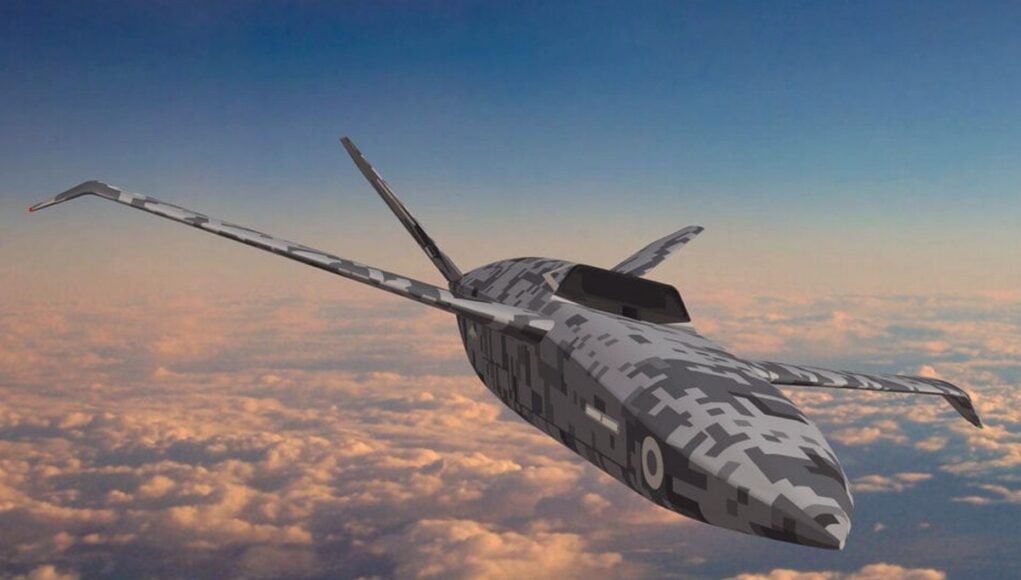
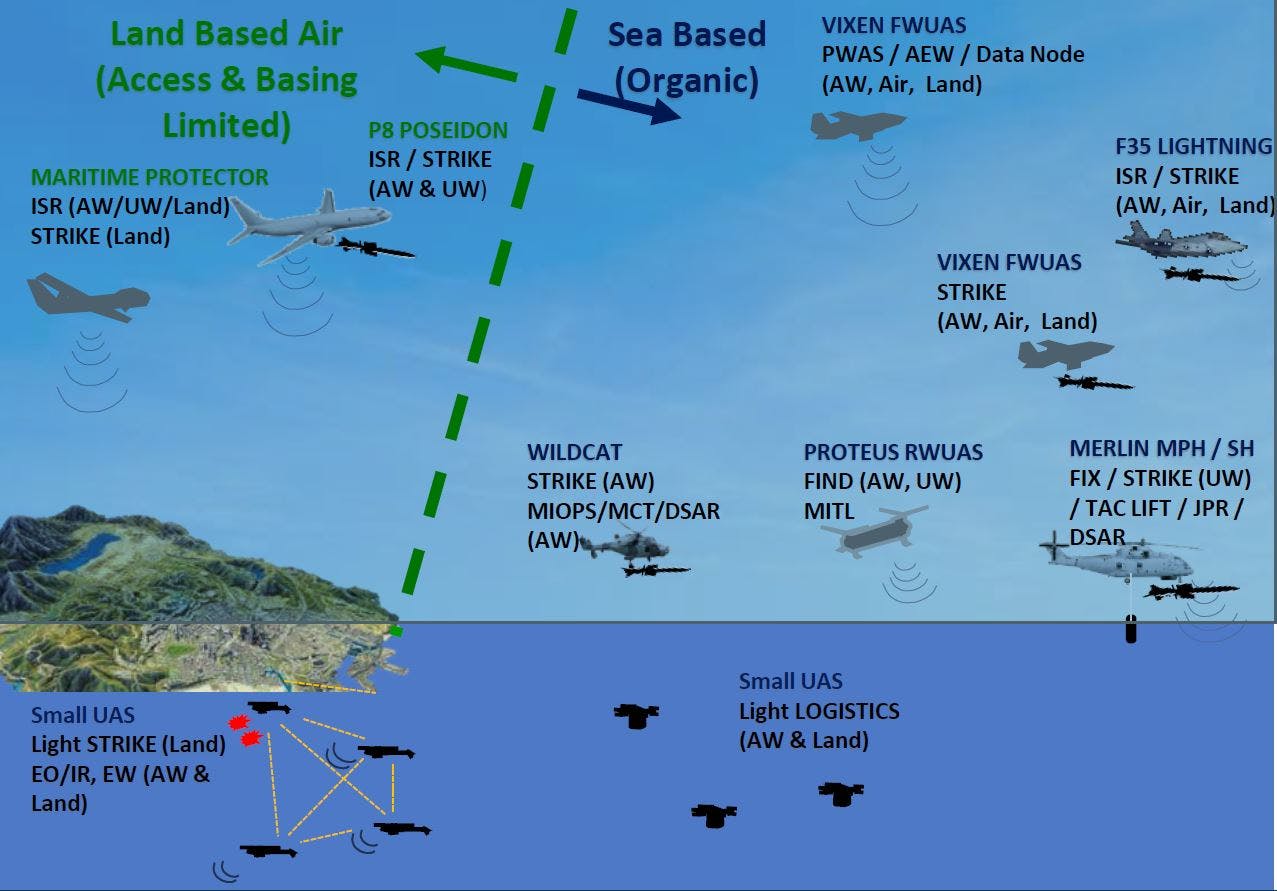
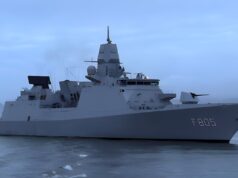
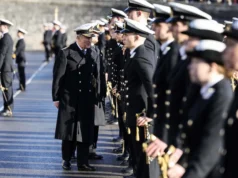
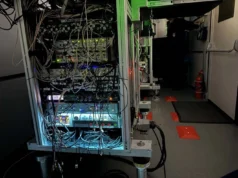
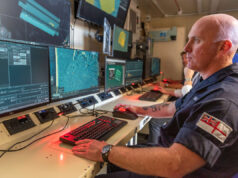
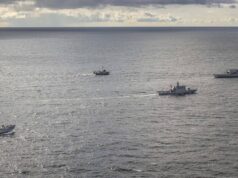


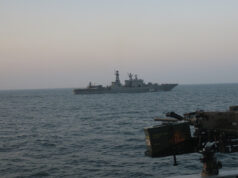
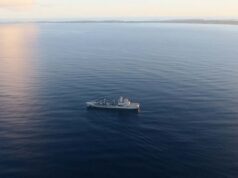
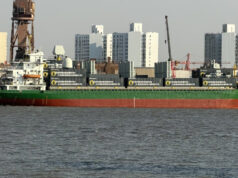

This is a no brainer, however until an elegant solution arrives it would seem that a plausible platform would be the V247.
While Bell are still developing the V247, the USMC MUX project for which it was envisaged has been broken down into smaller subsets. Doubt that the RN has the finances to complete V247 without the USMC backing.
The USMC realised a single drone to do everything wasn’t feasible, hopefully the RN will collaborate with the USMC rather than repeating the same evaluation process. For AEW the V247 would be an excellent choice given it’s not vulnerable to a cat/trap failure.
A fixed wing drone would be better suited for loyal wingman and refuelling roles.
Why ? They have Merlins…….
Yes but they don’t have enough Merlins to perform all the roles it is now tasked with. Then, of course, there are the inherent advantages that a fixed wing platform would have over rotary wing for roles such as AEW and refuelling.
In this circumstance I would have to disagree. The loyal wingman aircraft will need to be more comparable to the F35, in terms of speed, endurance and “stealth”. If is to fly in concert with a F35 there’s little point in having a non stealthy UAV that will stick out like a sore thumb, giving away the F35’s location.
Vixen and Proteus for RN and Mosquito for RAF.
And Maritime Protector too.
Are we finally starting to sort our **** out?
Agreed man I think perhaps there has been a shift in thinking and the movers and shakers who pull the strings from behind the scenes are waking up to reality. A clear direction of travel aka sorting our 💩 out.
it can only be welcome news for our armed forces 🇬🇧👍🏻
I have to agree, a coherent and achievable plan, very exciting times guys….
Am I getting that slide right in that it seems to show a wider (more flexible) range of attack options? Finding stuff, or the ability to find stuff across a range of platforms is one thing, attacking them much more limited at present. This seems to address that.
P8 / Vixen / Protector / Small Light Strike UAV in land . Very interested in that.
They list P8 as Strike, but has sub optimal torpedoes as no Stingray and no ASM missile at present.
Don’t our P8 carry harpoon? And won’t they be able to cart the new interim ASM when it’s gets sorted in next few years?
Hi Daniele,
Yes agree, it does look like the UK military is now on the tech advance. Just concerned about the number of regular troops.
Cheers
George
Definitely. All sounds very promising 👍
This reads almost verboten from comments on this journal that preceded it by a good many months , i have a conspiracy theory that it was this sight that inspired the program . Though of course you would be easily able to refute it by pointing out comments from the other Sean and the damage they do to the legitimacy and competence of the sight .
They need a fixed wing AEW especially when going up against near peer enemies. The helo borne AEW just won’t cut it.
Its worked for 40 plus years, just the snobs always want bigger options, use what works, which is why the Navy procurement is better than the Army. Qinetiq have been firing drones for 10 years, but as they get above a certain weight they rip their wings off.
Not so much bigger as higher, therefore further. Once you know something’s out there, maybe you can get a good view of the environment using a combination of F-35s and Crowsnest, but having F-35s flying picket all the time would be very expensive in airframe-hours.
Samson slung beneath a tethered High altitude Balloon…. Job Done !
Samson weighs tons, too heavy on a balloon.
Hybrid Air Vehicles Airlander 10 has a ten ton payload.
See the Dreadnought 2050 concept which had a PD laser and search radar on a air platform tethered to the ship.
And fuel costs. 2000hrs has been quoted for early lot production aircraft, Is the report suggesting we won’t know what the airframe hours for lot 9 and later until 20204?
Genuine question.
UK lots curtesy of UKDJ
“2 F-35B in LRIP run 3, 1 F-35B in LRIP run 4, 1 F-35B in LRIP run 7, 4 F-35B in LRIP run 8, 6 F-35B in LRIP run 9, 3 F-35B in LRIP run 10, 2 F-35B in LRIP run 11, 2 F-35B in LRIP run 12 6 F-35B in LRIP run 13, 8 F-35B in LRIP run 14 and 7 F-35B in LRIP run 15. This brings us to 42 in 2023.”
“Teardown inspections of the original F-35B full-scale durability test article (BH-1) completed in October 2018.
The program canceled third lifetime testing of BH-1 due to the significant amount of discoveries, modifications, and repairs to bulkheads and other structures that caused the F-35B test article to no longer be representative of the wing-carry-through structure in-production aircraft.
Release of the DADT report on BH-1 was expected in November 2020, but has been delayed to 2021.
The program secured funding and contracted to procure another F-35B ground test article, designated BH-2, which will have a redesigned wing‑carry-through structure that is production‑representative of Lot 9 and later F-35B aircraft.
Contract actions for BH-2 were completed in November 2019 and testing of the first lifetime is scheduled to begin in 1QFY24. The BH-2 ground test article will come from Lot 15 production.”
https://www.dote.osd.mil/Portals/97/pub/reports/FY2020/dod/2020f35jsf.pdf?ver=C5dAWLFs4_N3ZLrP-qB0QQ%3D%3D
The Armed Services review have already stated that Crowsnest is an interim solution until appropriate drones are in service. Why debate the obvious. Drones are the future for “surveillance” and “dumb” activities like AEW & refuelling. Can we move on?
But I read somewhere (here?) that at height and distance the Samson radar is fine and crowsnest complements for shorter range and lower heights…
I also read somewhere on here that in the more distant future, drones operating at sub orbital heights will give enormous coverage.
This does question how these radars are managed remotely. But I guess this is the first thing they think of. I guess these drones don’t have a ‘bag’ but a ‘plate’ (?)
There is a limit of how high drones can fly.
At 100000ft or 30000m there is little air, you are effectively in space.
Less then 1/10th of sea level pressure at 60000ft
Jet engines don’t work above 90000ft.
The Samson radar range, is still limited by the Earth’s curvature at the horizontal direction.
Nothing flies higher than a satellite. I wonder what role satellites play in AEW and related functions?
For air not a lot due to distance and RCS size of the target, though its being considered for the new generation of extremely low orbit satellites.
For anti-surface operations however radar satellites do already provide detection and tracking of ships and submarines.
Its all about where the horizon is. Sampson is 10s of meters above the surface and has a fairly short horizon. RW will fly up to around 10k feet (~3000m) and some distance ahead of the ship. This height and offset significantly increases the distance to the horizon filling in the sampson gap below its horizon. It is a good solution. However, a fixed wing solution would probably operate 2-3x higher (and be faster so it can get further away from the t45) giving an even bigger distance to the effective horizon.
Pretty much as predicted in many threads on here.
Makes sense.
This has undoubtedly been the direction of travel for many years. But has received a massive boost from the modernisation funding settlement.
This looks like the way to go.😊
This seems like it should be pretty achievable within the time frame given.
Nothing here is going to require reinventing the wheel and it should end with quite a good upgrade for the carrier.
As long as it gets funded I don’t see why this shouldn’t be possible.
Why? it is a completely new field.
Implies a working “catapult”, command and control of the drone from the sea, radar and data transfer. Adding usual sea weather difficulties.
I don’t find any of this trivial.
Data transfer is old hat. Plenty of data link capability around even if it goes via sat. Same goes for control of a drone… It can be done via an iso container with a sat link. Landing the thing might be interesting though!
GB have you heard any more on Russian signal jamming in Cyprus?
That could be a big problem for AEW drones, if jammed, even though the signal can be encrypted.
Jamming is not really a problem for point-to-point line-of-site comms.
The RF power required to jam P2P pencil beams from a distance is vast.
The issue is once you are in line of site with a modern radar that can then blast RF into the receiver saturating the receiver and filling the digitiser. Or the opposition have UAV doing the same however this would be a priority target for area/point defence weapons that we have plenty of.
The issue is do you do the data reduction in the UAV or are you transmitting raw. Data reduction requires processing and therefore weight (processors) energy and cooling.
There are S/N advantages to aggregating raw data and then processing – the FT maths is well known and published from the last century.
Raw transmitted data in this situation would be best, as it would mean more resources (electrical power) can be used for the radar’s transmitter-receiver modules thus better power output and receiver sensitivity. It would also mean there is less space designated and required for cooling or housing the signal processing itself. Therefore the UAV would be lugging around less weight, so could potentially have more endurance and fly higher.
There is also the case where FFT, can deliberately filter out very small signal returns due to the way it averages out a series of reflections. Having the ability to read the raw data can be very beneficial especially when looking for incredibly small radar returns from very stealthy targets. But to do that you need serious computing power, which is best placed on the ship.
Srsly? Haven’t you any idea of the bandwidth required for raw radar returns? The RN hasn’t any datalinks anywhere near that capacity.
Hi Ron, The current Link 16 and 22 even when quad stacked do not have the bandwidth capacity for transmitting raw radar data. The F35’s multifunction advanced data link (MADL), however does. The AN/APG-81 is supposed to be an X band radar operating between 8 and 12 GHz. However, it is rumoured that it can also operate beyond this band in the C and Ku bands. This would give it a very wide communications bandwidth. This type of bandwidth is what’s needed for the AEW drone I would suggest.
Thanks davey.
Part of the work that Leonardo are undertaking for Tempest is also looking at GaN AESA datalink antenna.
Wouldn’t be shocked (thats if this ever goes ahead) if the Typhoon’s Radar Mk.2 isn’t used as the sensor….
The Kratos XQ-58 Valkyrie which is probably of a similar size and design to Vixen is developed from their target drones and shares their JATO method of launch. While it’s probably more expensive per launch cycle, the upfront costs and structural impact on the ship are far lower.
Likely much of the reason besides cost that we are getting reduced E7’s and the USAF is not seeking a manned replacement for E3. Hopefully we end up wth something this time though instead of just more power points and acronyms.
The coming together of a large carrier, (that has the added ability acting as an LHA for 250 marines) with a fifth generation VTOL fighter acting as a centre piece with a full set of fixed wing drones: wingman, Strike,AEW and in flight refuelling. Adding in arguably the best ASW rotor in the world networked to another set of Rotor drones.
Thats a 21 century ship in every sense of the word with elements of utility that not even a US super carrier will have. ( The dedicated amphibious operations and more robust air opps).
Not sure how it all got there ( or if it will) but it was either blind luck or there were a few very clever visionary people playing a very long game.
Beutifully summarised Jonathan, as you rightly say, we have ability to build something really special here..
“Eggs and Baskets” springs to mind !
But if you don’t have a basket you can’t carry more than a few eggs safely. Life is always a balance of risks……few eggs and no basket vs having a load of eggs in a basket at the right place to utilise them as needed. To be honest you probably need to do a full study of the implications of the elements of complexity and chaos within systems that contain differing numbers of eggs in differing types and numbers of baskets and carrying options and the egg related utility vs the threats generated to the eggs and any reduction in egg generated utility ( even with the full loss of the basket and eggs you may still be able to make an Omelette and complete your egg related aim with an acceptable outcome).
That’s a Cracking Reply…. I had to read it twice as i thought you were Yoking !………. I guess that explains why the Carriers don’t have VLS then !!!!
Yes, VLS on a carrier is just asking for egg on your face. Happy Easter.
Eggsellent!
One must always try to eggcel in all things.
Good at least we will get modern AEW and not the current obsolescent Searchwater.
Nothing obsolete about the radar in Crowsnest. Terrific performance reported by all those that have seen it in action.
Anyone know how far project VIXEN has got, 2030 is not far away. We do seem to be developing aircraft both manned and unmanned at a great rate of knots, Tempest to be operational by the mid 2030s, VIXEN to replace Merlin AEW by 2030 UAV tankers carrier launched by 2030. Have we suddenly found our engineering skills again.
Full AI assisted detailed design, coupled with rapid prototyping and next generation 3D printing will be utterly transformative.
Funded properly and managed correctly, we are able to now envisage a combat system and get it into the air at speeds not seen since WW2.
The 20 plus years from drawing board to squadron service crippled previous generations, with creeping systems obsolescence (requiring expensive upgrades soon after entering service) and successive governments changing requirements and moving goals…
The F35 is perfect example of this torturous procurement!
“a combat system and get it into the air at speeds not seen since WW2.”
I wonder if this is a prototype 😂
https://wwiiafterwwii.files.wordpress.com/2017/04/missouri1948.jpg?w=809
Yeah, and the software is written and tested in exactly the same way as 50 years ago.
There is talk about plausible US-designed platforms because, at present, there is no UK or European alternative – even in the design stage. However, Vixen itself is still in it’s very early concept stage and, hopefully, UK industry will rise to the challenge and come up with proposals that will take this project forward.
There will be pressure to develop technology in the UK. Its the centrepiece of the IR. Don’t expect all off the shelf purchases.
https://www.uavdach.org/wp-content/uploads/2020/10/leonardo-demonstrates-helicopter-uav-teaming-in-uk.jpg
The cost death of most defence project is **slowness** as slowness means vast teams twiddling their thumbs whilst committees agonise over details or go haring off at the next crazy new idea: if you can have the gumption to fast prototype and deploy and fast iterate you also use current tech rather than 15-20yr old ideas.
Agreed, this is a prime example of what can be achieved and how to do it.
https://hushkit.net/2021/03/17/the-f-36-kingsnake-the-fifth-generation-minus-fighter-usaf-wants/
That’s a work of fiction.
Like the majority of your posts Wrong 5
Sorry for the typo Ron 5!
The MoD recently signed a contract for a prototype Mosquito/Vixen air frame to be built by Spirit in NI. Way past proposals.
“Under Project Vixen, the Royal Navy is exploring how fixed-wing UAS could be used for missions including surveillance, air-to-air refuelling, electronic warfare and strike.”
Vixen does sound at least eventually, to be similar to what Northrop Grumman have been working on testing, for over a decade and winning awards for it indeed, but in recent years been ultimately frustrated by US Govt decision making. I wonder if their expertise will filter into this project if allowed. Their, or similar American input/cooperation is the only way I can see this sort of drone being able to operate from carriers by 2030 tbh, you can’t just re-create what they have learned over such a long period considering that the US Govt is still reluctant to commit to much beyond re-fuelling capabilities with their equivalents for the foreseeable future, even after all their work over nearly 20 years. I suspect early warning and re-fuelling for that matter, will however be more than achievable in that time frame assuming the airframe is already relatively mature and that brings us back to American co operation as operating from carriers is very different to what say Bae has developed with its various drone programs.
“Potential catapult solutions ideally should offer:
a. Max launch weight 55000lbs / 24949Kg”
Thats only 2500kg below the F35-B maximum takeoff weight and is an F-35B launching with 80% of its potential maximum fuel and ammunition load.
OK, Serious question…. To allow this C and T system to work alongside existing F35 launching on our two carriers, Just how much Butchering of the Deck and Below deck compartments with all their equipment and associated plumbing/electricals/machinery/superstructure would actually be required ? How long will it take ? How much will it all cost ? Given that both Ships were supposed to have been designed for but not built with a similar system, Will this System be located in the “designed for” area or a different area ? Will Both Carriers be converted ? We saw figures of £1.5 billion nearly a decade ago, will this be way cheaper now ? …… Another angle that everyone on here has failed to see or even mention is for a new build ship…. A ship big enough to launch and recover UAV’s and compliment the Carriers. Another angle is, We see that one Bay class is to be converted, how about an Albion Conversion ? How much easier would it be to convert ?
Surely Albion and Bay class are the wrong design completely to try and recover drones, could be possible to launch them but I dont see how recovery would be possible. Plus they are both much older than the QE class to put a ton of development costs into.
Maybes the T32 might be the one to look at for this capability? Or a civilian style conversion on something that could have a long flight deck?
I’m only giving alternatives to the common but factless based comments being banded about here……. The Bay class re-design/build concept shown here a few days back shows that this type of work can be done. As for T32 ? well everyone here seems to think they will be like the T31’s but again, nothing factual is actually known beyond their use as Mother Ships for UAV’s and other Autonomous Vehicles……. Having a 10000 ton “Light UAV Carrier Design with a C&T system already worked out in time for Build in the late 20’s early 30’s is most certainly worth considering when all other things are considered……
If T32 turn out to be a command & control T31 then that idea is out of the window.
Something akin to HMS Ocean as in built to civilian specs with a required flight deck would surely be cheaper than converting one of the QE class to have this facility.
Your alternative to the common but factless based comments being banded about here, are just more common but factless based comments.
That is a very good question……..the QE flight decks are currently configured for Vstol and Helo ops. They can be reconfigured for Catobar, but would only have 2 cats and associated traps on an angled deck layout essential no matter what, for safe recovery of these drones (which are of a fair size). The RN is going to find itself in a quandary at some point! Going down the catobar Road is all well and good, but one of those two cats will be positioned where the ski jump is now….
You might arrest on the angled deck but take off with the catapult built over the deck facing front alongside the ski jump.
That way minimal cutting up of the deck is required.
Why assume an angled deck is required for UAV?
These are fair sized UAVs and like a normal aircraft on a carrier will require an angled deck in order for it to land safely if it catches the wire, or do a go around if it misses it.
Not having an angled deck does not preclude doing that.
“In September 2002 it was confirmed the design would be an ‘adaptable carrier’ configured with a ski jump for STOVL but capable of being fitted with catapults and arrestor gear if required at some point in the future.
The displacement had by now grown to 60,000 tonnes. The First Sea Lord, Admiral Sir Michael Boyce stated that RN studies had decisively concluded that a larger ship is cheaper to build in terms of cost per tonne but also has lower maintenance costs.
His maxim “air is free, and steel is cheap” was widely quoted and in line with a global trend for larger combatants. Work done in the 1960s for the cancelled CVA-01 carrier design found that increasing tonnage from 40,000 to 50,000 tons increased costs 10%, but aviation capability by 50%.
Conversely, the CVF designers concluded in 2001 that a 25% cost reduction for both ships, from £4 billion to £3 billion, would result in a 50% cut in sortie rate. A larger ship also met the criteria for sortie generation, adaptability, comfortable accommodation standards and the ability to embark extra personnel and aircraft in an emergency.
The bigger ship is also easier to upgrade in future, a major consideration for a vessel with a planned lifespan of 50 years.”
https://www.navylookout.com/development-of-the-queen-elizabeth-class-aircraft-carrier-a-design-history/
“The displacement of the Queen Elizabeth-class aircraft carriers upon delivery to the customer will be approximately 65,000 tonnes, which is the same as the predicted displacement when we started the manufacturing phase, although the design allows for weight growth in excess of 70,000 tonnes through the service life of the ship due to upgrades.
https://www.theengineer.co.uk/your-questions-answered-hms-queen-elizabeth-aircraft-carrier/
Blimey shipmates is that a drone being launched from the QE’s new catapult?
Don’t be silly Cap’n, they haven’t made a decision yet on either the cats or the drones!
https://www.skwigly.co.uk/wp-content/uploads/2011/12/Captain-Pugwash.jpg
How much room do we have below decks to fit one of these aboard seamen stains?
Depends on how many crew you want to billet topside Cap’n!
https://i.ytimg.com/vi/gR3ZUCGhA_g/hqdefault.jpg
Excellent …. More Captain Pugwash, that’s what’s missing here…
Couldn’t agree less. Absolute smutty rubbish.
Interesting use of term ‘strike’ in schematic alongside Merlin. They getting upgraded with Sea Venom or is that exiting Sting Ray torpedo ?
Duh…just seen the ‘uw’ tag….back to sleep.
The Rear Gunner will be provided with a box of assorted Sticky Bombs to be dropped on target by hand during breaks in the clouds.
The elephant in the room is, of course, all this nonsense could have been avoided if they had built the carriers with bloody cats and traps in the first place. The way ahead is continuing with a clownish error and compounding it ad infinitum! Errrmm…”t was always in the plan”…in a pigs arse it was!
Should have built CV01 then !
Could have done a lot worse! I wonder how that might have affected the Falklands conflict had they been available?
Who Knows…. Probably wouldn’t have been one…. It certainly would have been better to deter than fight that’s for sure. Not forgetting all the lives lost and horrific injuries sustained by all……23 Ships were either damaged or sunk too. A Decision made due to cost savings by one Government, isn’t always the best longer term one !. Sadly.
We also easily forget the planned “Malta Class”…..
Yes, a couple of brace of phantoms, with sparrow missiles, might have been seen as not worth arguing with! 2,000 lives saved!
You’re forgetting the “Sea Tornado’s” though……
Were Tornados’ available in 1982…I can’t remember?
Yes, Just about but not quite ready nor probably capable of getting there.
There was a lot of talk and actually some work done on creating an improvised aircraft carrier out of BP oil tanker so that some kind of modified Tornado could participate.
The whole thing was stopped when the capabilities of the Harrier and the timescales involved were realised. The Tornado, as was then immature, wasn’t really any better than the Harrier.
There was also the issue of zero hangar facilities and non navalised planes.
I suspect it lodged in Max Hastings brain.
The Tornado whole undercarriage would of needed heavy modifying for the Traps!
The same issue with a marinize Typhoon and Gripen. And a fuselage redesign, as well with the Typhoon!
The UK did have former RN Phantoms at the time of FW, but handed over to the RAF. They would of needed a CAT to launch from a deck.
Oh quite: the whole thing was a bit idiotic.
If it had involved Phantom there **might** have been a touch of realism!!
The whole thing was daft: what do you do with the bridge structure – if you have a bolter?
Yes not quite ready! The first few were delivered in 1981, became operational in 1982. The operating tactics would have needed to be evaluated first, before to be sent into combat.
Only a few delivered for training proposes and evaluation.
The technology didnt exist at the time of build to do it though.
What technology?
^ X2.
Electromagentic catapults, well it existed but it didnt work and still doesnt so how could we have fitted it at the time?
Steam catapults have been around for a hundred years or so….and still are the mainstay of carrier launches. We build some very large capacity electric boilers for industrial use! If the QE’s have enough electrical capacity to run emals, then they could have supported steam boilers!
Fully appreciate that but the design study at the time was not for steam, they would never have fitted an ancient technology to the carriers (despite the fact it works reliably).
Personally I have no idea how much space the steam boilers and all the pipe work would take but im sure it would be quite a bit and they simply never got designed from the offset for it.
The only option was emals which if we had fitted would be a total disaster right now.
So ancient that it is in use in all modern aircraft carriers? Just because steam generation has a long pedigree doesn’t make it ancient technology. So, the QE’s were designed for a new aircraft that had not flown….in order to cover the eventuality of it not working, an unproven and yet unbuilt launch system was to be the back-up! Can you not see the problem here? These are big ships, I’m sure that space for some steam boilers could be found…even if it meant dispensing with the jacuzzies, gymnasiums and the junior rates ensuites!
As I said despite the fact that steam works and is present in most ‘current’ aircraft carriers they simply did not get designed to incorporate it. The ships would need a complete internal redesign to fit it.
You made the point they should have just been built from the start with cats and traps and the only option that was studied was emals, it was both horrendously expensive and doesnt work so that wasnt an option hence my response.
Yes F35B was unproven but we had operated harriers for decades prior to it, the concept was done before and proved to work.
You have missed my point! The ship was designed around two unproven technologies The concept of the F35 was not proven by the Harrier….lift fans and computer controlled dynamics are not the same as total vectored thrust…they are vastly different technologies! If the carriers had been designed to incorporate a proven launch system rather than a projected one, we would now have carriers that could fly a range of fixed wing aircraft and drones. How good would that have been? It is the the old proverb…’a bird in the hand is worth two in the bush’….the bird in hand was kicked into touch in favour of the two in the bush. One of the birds was caught…. the wrong one IMO!
Yes ‘if’ it was designed to use steam then fair play but this was never considered and would have created shortcomings in other areas of the carrier with the space and plumbing needed.
F35 may not have been proven however it was never going to fail, too many parties involved from companies to countries. Emals is just a US design currently and im sure they will crack it in time but it simply was not ready for the time we designed the carriers.
Having a range of fixed wing aircraft as nice as it would be they will be out of date in a decade and replaced by drones not just by us but by others.
This is all before factoring in the cost of incorporating the emals system and also buying airframes which would only end up being replaced by drones its all money we simply dont have available.
The future is loyal wingman and autonomous regardless of much we all want 100 carrier borne aircraft, the mess ups in design and cost over runs/delays may well be a lucky escape to land us at the forefront of what is to come.
So … They were not “Built For” them then ? I’m really confused now…. If they weren’t built for them, just how much will it cost to fit them now ?????? Surely It is better to build from scratch, Let’s just call it HMS Ocean 11……..
It was supposed to have been built with emals in mind…though I understand that BAE forgot about it. Emals would have taken less space than steam boilers!
I often loose Emails too.
And I females!
I suppose the advantages of a large platform like the QE class, mean serious modification is considerably easier and was always going to happen at some point.
The sky jump was only ever supposed to be for the first 25 years of a projected 50 year design life. Fast moving events have somewhat overtaken this philosophy!
Assuming things pan out, it ‘might’ just finally shut up the Carrier deniers!
Modification, yes but probably not steam catapults though. It depends if the US is going to persist with the development of full-scale emals for its carriers, I guess it has to. If they are successful the probability is that it will be too expensive for us…. thereby limiting the RN to one fixed wing manned aircraft and light weight drones. Life could have been so much simpler!
Could this be the answer?
“EMKIT+ would use a longer launch track (94m) to enable launch weights of up to 10,000kg’s to be accommodated.
For reference, Predator B or Reaper has a maximum launch weight of 4,763kg.”
https://www.thinkdefence.co.uk/2014/05/whatever-happened-emcat/
Length of QE Class 280m
Gripen E maximum takeoff weight of 16,500kg as an example. Could the ski ramp be included to gain additional lift?
Ski Jumps to not add lift to the aircraft.
A ski-jump ramp at the end of the flight deck redirects the aircraft to a slight upward angle, converting part of the aircraft’s forward motion into a positive rate of climb. … By the time its upward velocity has decayed to zero, the aircraft will be going fast enough for its wings to produce enough lift.
Not quite correct but close enough.
A Gripen with only a small single jet engine, without vectored thrust, would very much struggle to take off the deck, without a CAT.
The F-35B could still take-off without a lifefan, if it just used the swirl nozzle jet engine to provide vectored thrust to take-off, with ski-jump But with a much reduced take-off weight.
If they ever decide to move forward with Sea Gripen I guess this might be a consideration for the future?
Given the advantages it has to offer I’ve never understood why we didn’t move forwards with it for Typhoon. Available since 2010
“Prior to Saab’s selection of the F414G, the Eurojet EJ200 had also been under consideration for the Gripen; proposed implementations included the use of thrust vectoring.”
Gripen M: proposed carrier-based version based on the Gripen NG. As of 2011, its development was underway. As of 2013, Brazil and India were interested. This variant has also been named Sea Gripen or Gripen Maritime. In July 2017 the Brazilian Navy began studying the Saab Gripen for naval purposes”
I think assisted launch and recovery could reopen doors that might have remained closed.
Saab would be in a prime position to offer friendly nations like India an aircraft/ UCAV that could fly from the decks our carriers.
Saab will be working alongside us with Tempest so let’s see what if anything comes of it.
Gripen UCAV: proposed unmanned combat aerial vehicle (UCAV) variant of the Gripen E.
Gripen EW: proposed electronic warfare (EW) ‘Growler’ variant of the Gripen F.
I see your point H, but emals are now a maturing technology …. It’s always best to let Uncle Sam pour in the millions and de- risk cutting edge technology!
It’s an interesting point, but modern Gen6/ UCAV technology is truly a revolutionary leap, I think it will prove as revolutionary as the jet engine.
This new technology has accelerated past the old CTOL v STOVL argument.
I was for STOVOL for the UK, as I thought it was the best fit for a small Navy, with the huge training burden for conventional carriers.
These new developments show that we would probably have been better with CTOL on balance, but 20/20 hindsight is a marvelous thing.
That said, the mix and match approach we will be taking will make a formidable Carrier Strike capability.
That is not correct. The “adaptable ” CVF design used steam catapults as its design assumption.
However the 2010 decision to look at cats again, only considered EMALS in their financial estimates. No mention was ever made of the cost of fitting steam. Which is very odd.
Which begs the question as to whether they were actually built to to be able to fit steam catapults. Probably not as the design was clearly modified…..hence my argument about two unproven technologies. I understand that the possible provision of emals was compromised by design alterations at a later date!
When the design didn’t include provisions for EMALS, how could that design be compromised by design alterations? You can’t compromise something you didn’t have.
There’s not been anything released that would indicate whether steam cats could have been economically fitted or not. Which leads to the conclusion that those folks that controlled the estimating, were STOVL enthusiasts.
Imagine it, our own Royal Navy looking like a true 21st century futuristic force. It hasn’t fully happened yet, but I never thought I’d see the day when there was a genuine prospect of it happening!
I cannot see the sense in fitting Cats and Traps if they cannot launch the full range of aircraft so the carriers can operate other nations aircraft when necessary.
Also looking into the future , our carriers will outlive the F35 and by giving the Carrier Cat and Trap capability it will not constrain the eventual F35 replacement, dare I say it a navalised Tempest!!
Whether the carriers outlive the F35 is going to be determined by their length of service. The biggest enemy on the horizon is not the Chinese or Russians but the British government!
I cannot agree more. Given the uncertainty in the workd a 3% defence budget should be a minimum.
That sadly is very true, I cant see the current one removing or selling the carriers due to the naval ambitions they have been going forward with. Subsequent governments however will see them as an easy cost saving.
Hello Mike, The Specs of the proposed system will exclude most other conventional Aircraft options due to max weights and at a wild guess, the Tempest too. This system is for UAV’s only as far as I can see from what has actually been published….. Personally I’m still not convinced that this system will be for our Carrier/Carriers, a big question is forming in my mind due to the complete lack of reference to said Carriers. Put another way, HMS Queen Elizabeth forms one part of a capability which includes other systems based upon other platforms including ASW and AAW, She also relies on RFA ships. I would love to see a 21st century UAV carrier sailing alongside her, Think HMS Ocean ( Oh how I wish )……. Just my mind working overtime !
I agree
But I do not see the point in doing things by halfs. When if you are going to go that far, you may as well go the whole hog.
I agree with you I the Question if it is for the carriers but we have no other through deck vessel and to me it seems a bit crazy to have the proposed tanker abd airborne early wRning launch capability seperate from the carrier
Ha, all true, doing things by halves is how we do it though… I see no point in building 6000 ton Frigates or 2000 ton Patrol ships with little offensive power either.
The chances of the MoD building more carriers (even if they’re just limited to UAVs) hover very closely to zero.
Considering the first study to retrofit CATOBAR was deemed too costly at £1.5B, I seriously doubt EMALS will be feasible since it will likely be more expensive. That said maybe second hand CATOBAR from retiring Nimitz could make their price more attactive than first study?
An off the shelf tilt rotor design seems a more practical solution. Although to fly above 10,000ft and longer, guys on board will need warm parkas and oxygen masks. (The V22 has a square cross section, so no cabin pressurisation.)
Are we sure that is not a power boat with wings attached, or indeed, a seaplane?
In just over 9 years they plan to put out to tender, agree a deal, design and build not only the drone but also the launch mech, seems highly unlikely. I would be surprised if they get the tender /contract process finalised in that period.
The contract to build prototype “drones” was placed earlier this year. Spirit in NI will be building them.
The USN ucav programme started in 2007 and by 2014 costs had risen to @$900m. Their carriers already had cats and traps. For the UK to deliver a similar capability by 2030 on vessels that would need to be retro fitted with an EMALS system seems unrealistic.
A rotary uav looks more achievable in the time frame.
Could this be part of the rationale for reducing the Wedgetail E7 from 5 to 3?
I think the rationale was they never intended to buy 5 in the first place. The whole we will buy 3 new frames and 2 old ones, was the hint.
The two old air frames were actually bought.
Clearly from the slide the RN want to limit land based air to the the overland role in order to justify their aspirations. In reality the land based ISR could provide an umbrella of AAR support and early warning/intelligence over many of their operational areas especially if the ISR assets had AAR available. The areas where this wouldn’t be available are probably those where we would not want them to go on their own without the USN to support them .Selling a few Voyagers (currently used on the civil register) and buying a few new Voyagers Mk 2’s with booms will be much cheaper and more effective than searching for unique solutions which don’t currently exist and will require considerable investment for their development . Some of the compromises taken to keep the carrier program alive are now coming home to roost and it looks as if the carriers are going to suck up an increasing amount of scare military investment capitol to maintain their operational viability.
The slide implies nothing of the sort.
As for land based AEW and AAR, you’re nuts.
As for selling current Voyagers with booms and buying new ones. That’s rather obtuse, that would be like buying a new car when the ash tray is full. Most folks would just fit booms to the current aircraft or empty the tray.
This is definitely the way forward for the aircraft carriers and the assault ships . It will free up resources that can be utilised for other tasks
Think it’s called: syos aerospace or something like that.